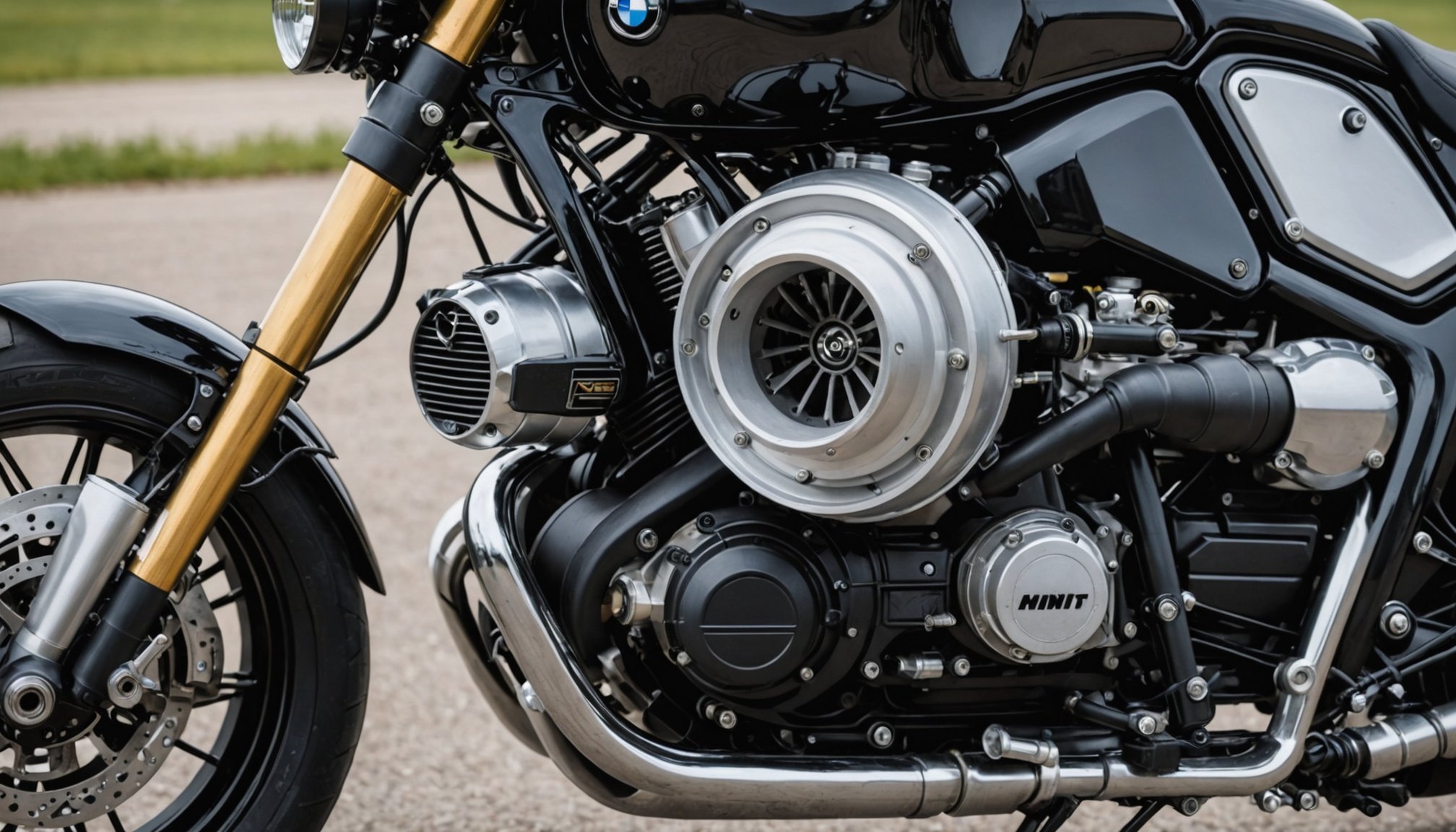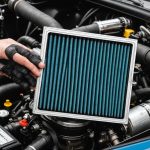Introduction to Throttle Body Synchronization
Throttle body synchronization is a fundamental process essential for maintaining the peak performance of the BMW R NineT Racer. It involves adjusting the throttle valves to ensure that each cylinder within the engine receives an equal amount of air and fuel mixture. This balance is crucial for optimal engine operation, as any slight imbalance can affect the bike’s overall performance.
In the case of the BMW R NineT Racer, precise engine tuning through throttle body synchronization significantly influences the motorcycle’s responsiveness. A well-synchronized throttle body allows for smoother acceleration, enhances power delivery, and ensures that the engine runs efficiently without unnecessary strain. This can maximize the bike’s potential, providing a more enjoyable riding experience.
Have you seen this : Ultimate guide to stopping and managing surface rust on your suzuki drz400 frame
Synchronization affects not just the engine’s power but also its efficiency. By achieving the right balance, you can expect improved fuel economy, which is an invaluable benefit for regular riders. Additionally, the engine runs more smoothly, reducing wear and vibrations, which, in turn, extends the engine’s life span.
Ultimately, understanding and performing throttle body synchronization provides a powerful tool in the toolkit of any motorcycle enthusiast, allowing for enhancements that are both noticeable and sustainable.
This might interest you : Revamp your kawasaki z1000: a comprehensive diy guide to replacing front brake discs for superior stopping performance
Tools Required for Throttle Body Synchronization
To effectively perform throttle body synchronization on the BMW R NineT Racer, you’ll need a selection of specific tools tailored for performance tuning and BMW repair.
Essential tools include synchronizer gauges and vacuum gauges, which are critical for measuring and balancing the air intake across different cylinders. These gauges provide precise readings, ensuring that each cylinder receives an equal amount of air, which is vital for achieving optimal engine performance. Additionally, these tools help pinpoint any discrepancies in air and fuel distribution, allowing you to make necessary adjustments.
Optional tools can further ease the process. A digital multimeter might help verify electrical connections. A torque wrench ensures that bolts are tightened to the correct specifications, preventing unnecessary strain on the engine components.
You can acquire these tools from automotive tool suppliers, specialty motorcycle shops, or online retailers specializing in performance tuning equipment. Bear in mind that the quality of your tools can directly influence the accuracy and ease of synchronization, so investing in reliable, high-quality instruments is advisable. Equipping yourself with the right tools not only simplifies the tuning process but also enhances your ability to achieve precise results, ultimately leading to improved motorcycle performance.
Step-by-Step Procedure for Throttle Body Synchronization
Performing throttle body synchronization on your BMW R NineT Racer is a meticulous task, but with guided steps, it can be accomplished effectively. Understanding the synchronization procedure ensures your engine runs at its best.
Preparing the Motorcycle
Before diving into the process, ensure your motorcycle is in a stable position on the centre stand. It’s crucial to warm up the engine to its operating temperature, allowing for accurate adjustments. Disconnect the vacuum hoses from the throttle bodies and connect them to your synchronizer gauges.
Initial Adjustments
Start by checking the idle speed and adjusting it according to the manufacturer’s specifications if necessary. Inspect the air-fuel mixture and make preliminary tweaks using your vacuum gauges to establish a balanced starting point. These initial adjustments are vital for achieving a smooth synchronization process.
Synchronizing the Throttle Bodies
Begin by setting the synchronizer gauges to measure the intake vacuum of each cylinder. Adjust the throttle valve screws meticulously until the gauges read an equal vacuum across all cylinders. It’s important to make small adjustments and recheck frequently, as this ensures precision and prevents engine imbalance. This careful tuning enhances the overall performance, making your BMW R NineT Racer more responsive and efficient.
Performance Benefits Post-Synchronization
Throttle body synchronization offers numerous benefits, significantly enhancing your BMW R NineT Racer’s engine performance. One major advantage is improved engine responsiveness. Proper synchronization ensures each cylinder receives an equal air-fuel mixture, leading to smoother and quicker throttle reactions. This results in a noticeable boost in acceleration and power delivery, making your rides more exhilarating.
Another important benefit is better fuel efficiency. When the throttle bodies are perfectly balanced, the engine operates more efficiently, reducing fuel consumption. For BMW R NineT Racer owners, this means fewer stops at the petrol station and longer rides. The synchronization process also contributes to a cleaner burn of fuel, which is environmentally friendly.
Additionally, synchronization leads to a smoother operation and reduced vibrations. By ensuring harmony among the cylinders, the engine runs more smoothly, minimising wear and tear. This not only makes your riding experience more comfortable but also prolongs the life of the engine components.
Such enhancements derived from thorough throttle body synchronization fundamentally elevate both the performance and the enjoyment of your motorcycle, affirming the BMW R NineT Racer’s reputation for superior handling and speed.
Troubleshooting Common Issues
Ensuring throttle body synchronization on the BMW R NineT Racer can significantly boost its performance, yet issues can arise. Recognizing and addressing these promptly is key to maintaining optimal engine performance.
Common issues include uneven idle, poor acceleration, or unusual vibrations. These problems often stem from misalignment in synchronization. A vital first step is identifying the exact concern by inspecting the synchronization with synchronizer gauges.
Once a problem is detected, tools like diagnostic software or multimeters can assist in pinpointing the issue. For example, if the synchronization seems inaccurate, recalibrating or adjusting the throttle valves might be necessary. For persistent issues, checking the vacuum hoses for leaks or blockages is advised, as they often affect synchronization accuracy.
To tackle synchronization issues, clear diagnostic steps should be followed. This might entail systematically re-evaluating each cylinder to ensure balance and recalibrating using the appropriate tools. Maintaining a detailed log of adjustments can also aid in tracking performance changes, helping identify persistent problems and solutions.
Employing these methods will help navigate through issues, ensuring the throttle body synchronization profoundly benefits your BMW R NineT Racer, securing a smooth, balanced ride.
Safety Precautions
Performing throttle body synchronization involves meticulous attention to detail and adherence to stringent safety measures. It’s crucial to ensure your safety and the BMW R NineT Racer’s well-being during engine maintenance.
Wearing protective gear is non-negotiable. Always use safety goggles and gloves to protect against potential hazards such as accidental spills of engine oils or other chemicals. These precautions safeguard against injuries that could arise from the interaction with hot or moving parts.
Working in a well-ventilated area is essential. Since the process involves running the engine, ensuring adequate airflow prevents the accumulation of fumes like carbon monoxide, which pose severe health risks. Thus, a well-ventilated workshop or outdoor space is advisable for conducting synchronization.
Be mindful of potential hazards inherent in engine work. Secure the motorcycle on a stable platform to prevent accidents. Be cautious with electrical connections and rotating components. If you’re unfamiliar with any aspect of the synchronization process, consult professional resources or experienced mechanics to avoid missteps.
By integrating these safety precautions into your routine, you enhance both personal safety and the effectiveness of the throttle body synchronization process, ensuring a successful maintenance experience.
Potential Pitfalls to Avoid
Navigating throttle body synchronization can be daunting, especially for enthusiasts fine-tuning their BMW R NineT Racer. Recognising and sidestepping common tuning pitfalls enhances the process and optimises engine performance.
Common Mistakes During Synchronization
Overlooking minor details often leads to errors. One frequent mistake is neglecting to properly warm up the engine before starting synchronization. An engine not at optimal temperature may yield inaccurate adjustments. Double-check all synchronizer gauges for calibration to avoid misleading readings that cause poor performance tuning.
Recognising and Avoiding Pitfalls
Understanding the nuances of the synchronization steps is crucial. Ensure all adjustments are made gradually. Sudden changes to throttle valve screws can cause imbalance, affecting the engine’s precision. Regularly refer to the BMW R NineT tuning guide to cross-verify each step with manufacturer-recommended procedures, reducing scope for error.
Importance of Double-Checking Adjustments
Consistently re-evaluating each adjustment is vital. After completing synchronization, recheck each cylinder to confirm equal vacuum distribution. This practice secures balance, ensuring each cylinder functions optimally. Always maintain a detailed log during tuning; this record assists in tracking changes and duplicating successful setups. Employing these measures prevents mistakes and ensures the longevity and performance of your BMW R NineT Racer.
Frequently Asked Questions
Understanding throttle body synchronization can be complex, so we’ve compiled answers to common questions to assist BMW R NineT owners.
How often should I perform throttle body synchronization on my BMW R NineT Racer?
Typically, it’s recommended to perform synchronization every 6,000 miles or during regular servicing intervals. This helps maintain optimal engine performance and ensures efficient fuel usage.
What are the signs that my throttle bodies are out of sync?
Symptoms of unsynchronized throttle bodies include rough idling, uneven engine power, increased vibrations, and poor fuel economy. Addressing these promptly prevents further engine wear.
Can I synchronize the throttle bodies myself, or should I seek professional help?
While technically inclined individuals may attempt the procedure using a BMW R NineT tuning guide, it’s crucial to have the right synchronization tools. For those less confident, seeking professional adjustment guarantees precision.
What specific tools are required for synchronization?
Essential tools include synchronizer gauges and vacuum gauges. Optional instruments like a digital multimeter enhance the process by verifying electronic connections, adding accuracy to the synchronization results.
Do I need to synchronize my throttle bodies if I’ve changed the air filter?
Changing the air filter can alter air flow, making synchronization beneficial to ensure the balance of air-fuel mixture, thus maintaining engine efficiency.











